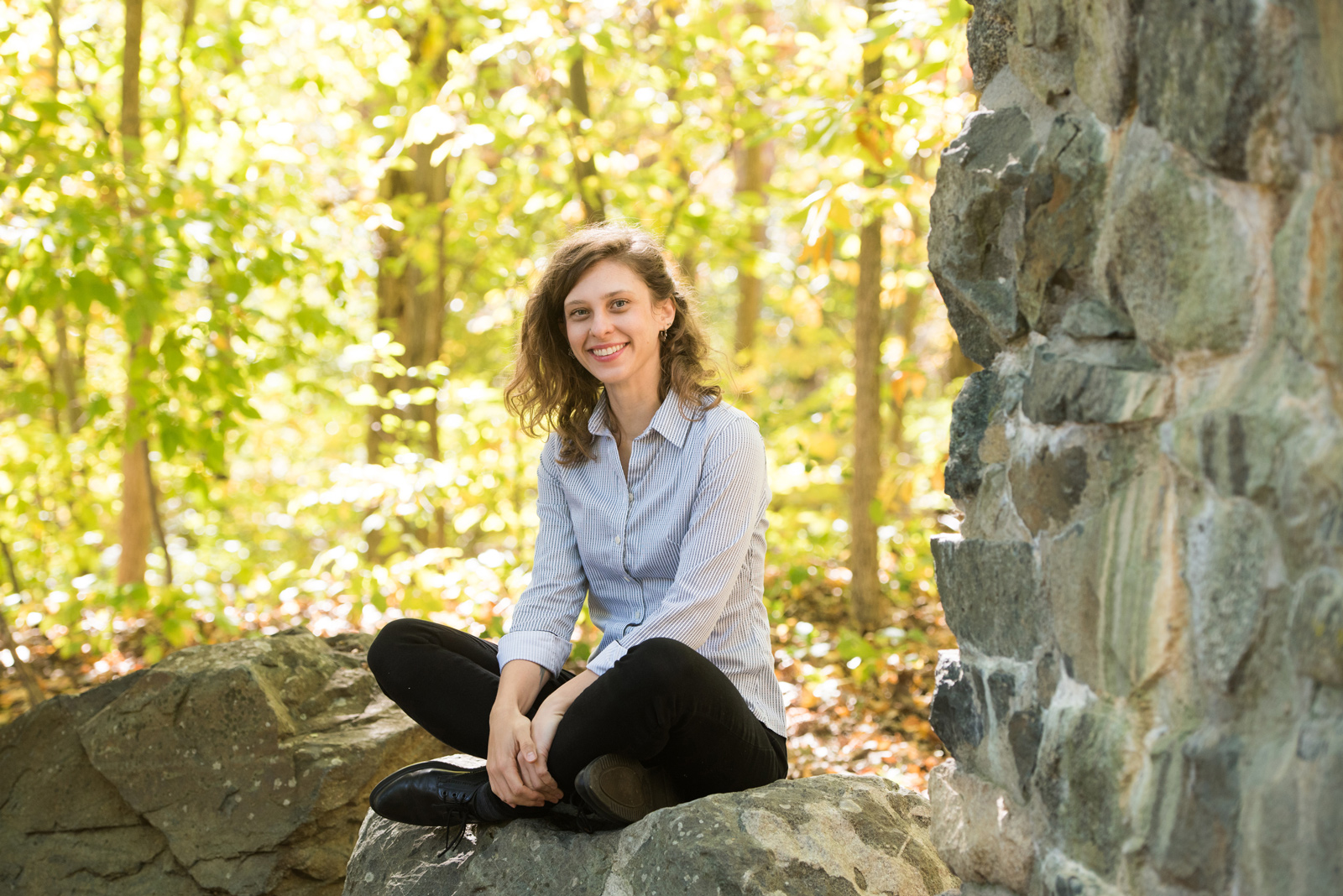
Mindy Bishop. Photo: Sarah Bastille Photography
Mindy Bishop, an HST PhD student, finds connections between artificial intelligence, sustainable energy, and patient care
Joelle Carson | MIT Spectrum
“In electrical engineering, I often find myself marveling at the simple concept of a switch—which is essentially what transistors are, the tiny devices that computing systems are made of,” says Mindy D. Bishop, a PhD student in the Medical Engineering and Medical Physics (MEMP) program at the Harvard-MIT Program in Health Sciences and Technology (HST). The Institute for Medical Engineering and Science (IMES), is HST's home at MIT. “It is truly awe-inspiring how something so simple can be leveraged, through many layers of abstraction, to do so many different things, from typing an email to video conferencing to harnessing sophisticated artificial intelligence.”
Bishop’s journey through academia contains multiple flips of myriad switches. Not many MIT PhD students will tell you they struggled with algebra in high school, didn’t take a science class until attending community college, and originally pursued a career as a jazz bassist. But Bishop’s path is not exactly conventional. After navigating abuse and the psychological consequences of trauma during her early music career, she received a diagnosis of bipolar disorder, which piqued her interest in science as she investigated the chemical dynamics of her own brain.
“Since the scientific concepts behind my diagnosis were new to me, I realized that I really didn’t know anything about the physical world at all,” Bishop recalls. “And slowly, everything I saw turned into a mystery. The ways that cars work, how I could hear someone’s voice on my cell phone over a distance, electricity, what cancer is, and why our bodies are so strange inside. I wanted to know all of it.” She ended up enrolling in intermediate algebra and introductory chemistry at a community college and eventually graduated with a joint degree in bioengineering and materials science and engineering from the University of California at Berkeley. “Studying science allowed me to train my mind in a way that was consistent, grounding, and incredibly spiritual.”
The freedom to be creative
While considering graduate schools, Bishop describes feeling most “at home” with the people of HST, which is distinctive for its curriculum for engineers and scientists who are developing patient-centric innovations to prevent, diagnose, and treat disease. “While interviewing, I felt like I could be more expansive about the things I was thinking about and choose what to study on the science and engineering side, while still getting the medical training,” she explains. “I like that it spans the entire spectrum, from caring for individual patients in the hospital to developing new technology in any field that could have broad implications for all of humanity.”
That potential for expansive thinking means that Bishop will be equipped to pursue a number of different paths when she receives her PhD. In June 2020, she was a lead author on a paper published in Nature wherein she and her collaborators in the lab of Max Shulaker, an MIT associate professor of electrical engineering and computer science, demonstrated that carbon nanotube transistors can be made swiftly in commercial facilities with the same equipment used to manufacture silicon-based transistors, which are the backbone of the computing industry. Since carbon nanotube transistors and the 3-D architectures that they enable promise substantial gains in computing performance over their silicon counterparts, the implications are huge for individual consumers and industry giants alike.
This recent study is just one facet of Bishop’s research and one example of nanotech at work. In 2020, she received one of the first fellowships from the MIT-Takeda Program, which was designed to fuel the development and application of artificial intelligence (AI) capabilities to benefit human health and drug development. “The beauty of working on emerging nanomaterials such as carbon nanotubes is that we’re constantly finding ways to use their properties in new ways,” Bishop says. “We are just beginning our investigation of this new terrain.”
In this sea of possibilities, she says, the freedom that a fellowship affords is important. “Fellowship funding allowed me more freedom to take time to really think about the best way to proceed,” she says.
Making connections for a better world
What do semiconductors have to do with patient care and the human condition at large? A lot, according to Bishop. “Today, technology is intimately and exponentially connected to our everyday lives,” she says. “I wonder how we can learn from how massively lucrative and transformative the semiconductor industry has become to help solve some of our biggest problems.”
Those problems range from overarching threats like climate change, but also, in Bishop’s eyes, how we care for individuals in a medical and spiritual sense. “We have billions of amazing, beautiful people on the planet to take care of in all senses of the word. We have everything we need to do it; we just have to clean up some of the messes we’ve made along the way and use everything we know to come full circle to something sustainable.”
Graduate students at MIT are performing much of this research. “If someone is considering funding a graduate fellowship at MIT, I would encourage them to do it,” Bishop says. “We will do the work.”
Originally published here: https://spectrum.mit.edu/fall-2020/the-art-and-science-of-staying-grounded/